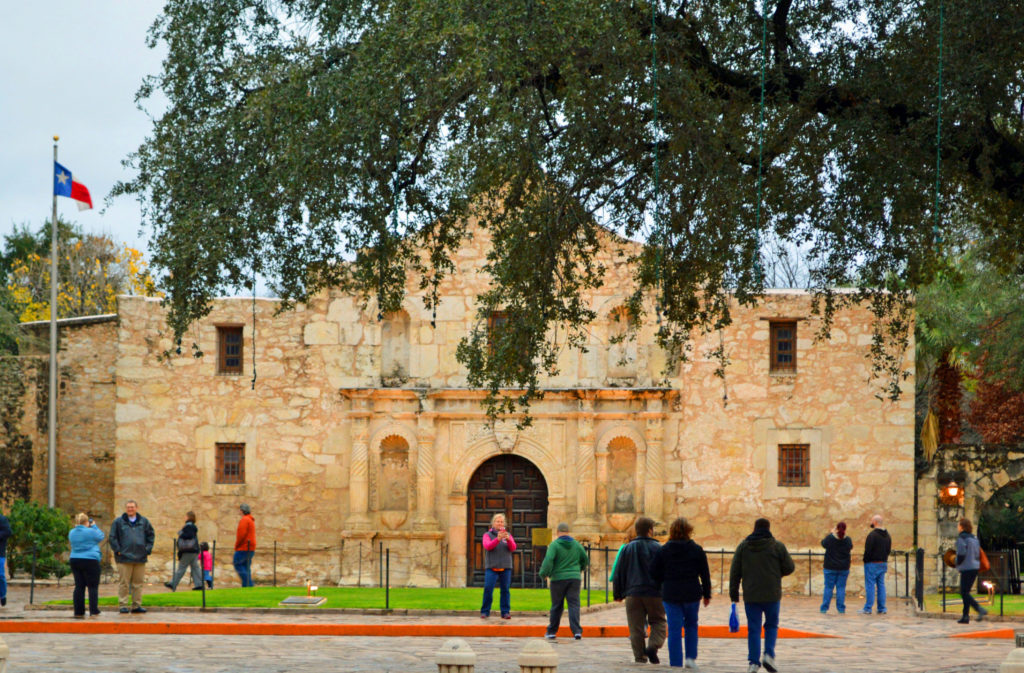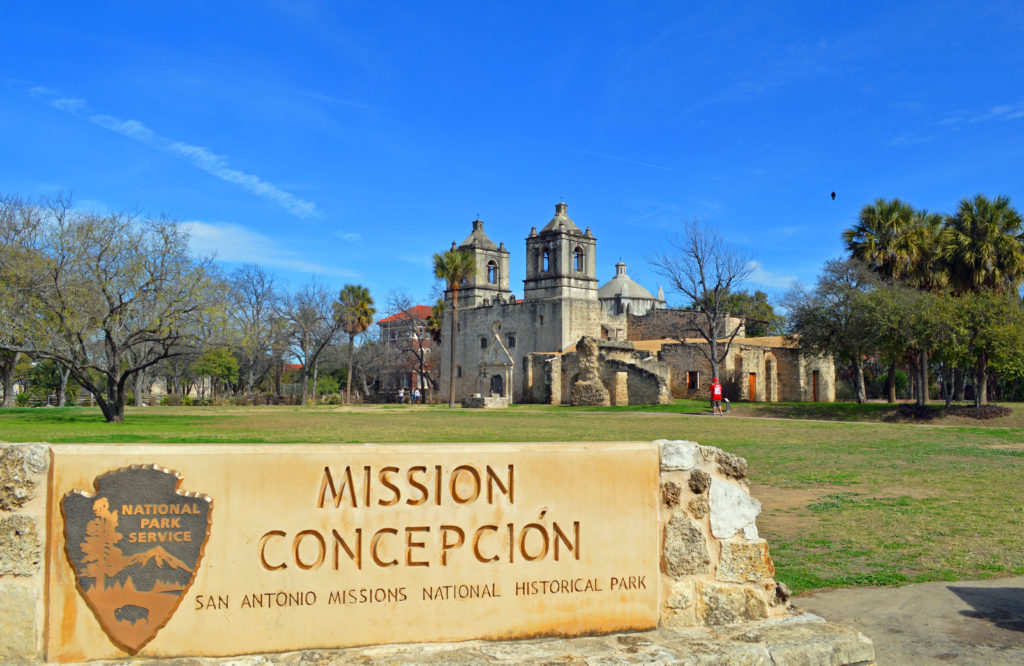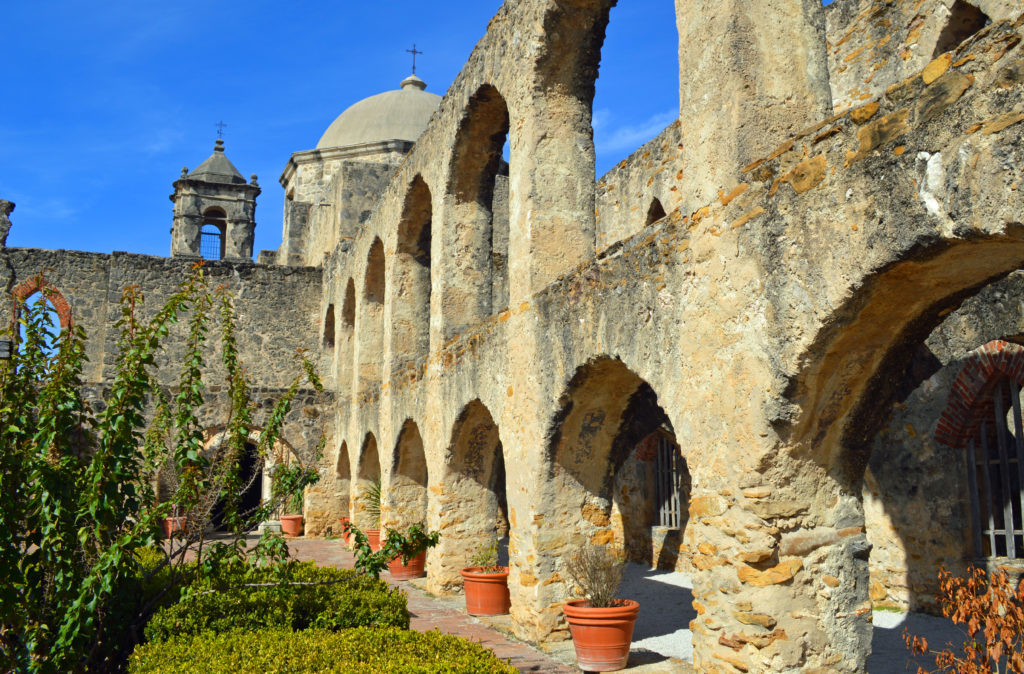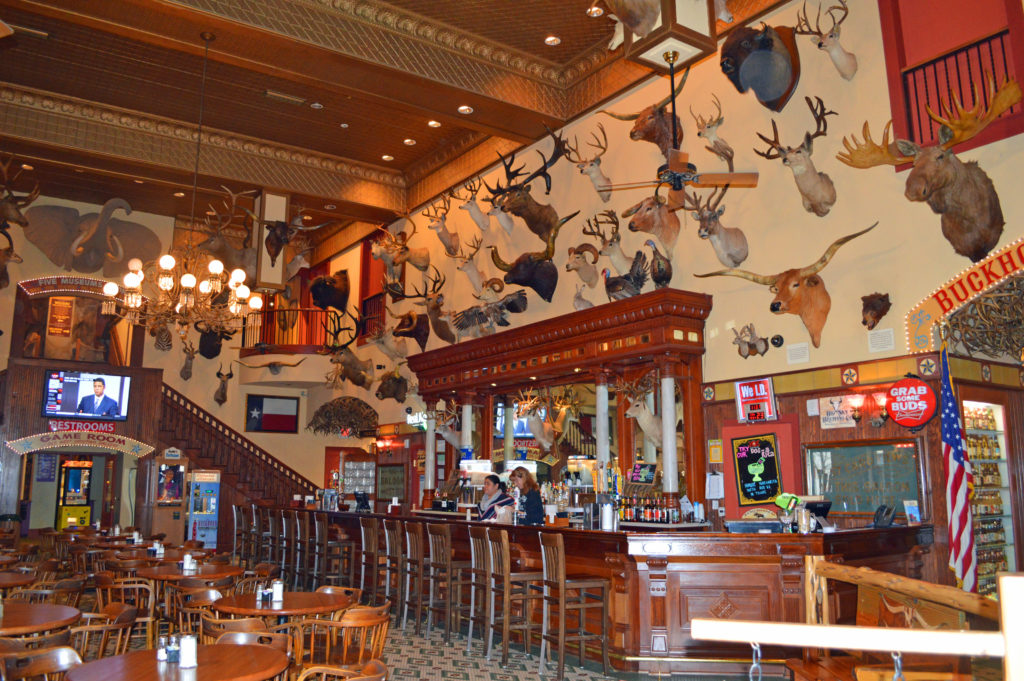MARILYN JONES unravels the intriguing saga of the Alamo and its heroic defenders, immortalised in Texas folklore
 The Alamo
The AlamoSAN Antonio, Texas, is best known to outsiders as the home of the Alamo— but if you’re a visitor you're in for a treat as you discover a vibrant community of history, attractions, and excellent places to eat and stay.
The first place you'll want to check out is the Alamo. Originally known as Misión San Antonio de Valero, the Alamo and San Antonio Missions National Historical Park are designated as a UNESCO World Heritage site.
Featuring interactive tours, exhibits, and a living history encampment, you'll experience and learn more about frontier life in early Texas.
Founded in 1718 as the first mission in San Antonio, the Alamo served as a way station between East Texas and Mexico. In 1836, decades after the mission had closed, approximately 200 Texan defenders held the Alamo from over 2,500 of General Santa Anna's troops from Mexico. The most famous defenders, William B. Travis, James Bowie, Juan Seguin, David Crockett, his company of Tennesseans, and other Anglo and Hispanic men occupied and fortified the Alamo, died fighting overwhelming odds for freedom. "Remember the Alamo!" became a rallying cry for Texans fighting for independence during the Texas Revolution.
 Mission Concepción
Mission ConcepciónThe Missions
Spain felt threatened by the French encroachments from Louisiana, so they stepped up their colonisation establishing missions in what is now East Texas. The Alamo came into being.
A second mission, San José, was established along the river in 1720. By 1731, the East Texas missions began to falter due to changing political policies, drought, and disease. Three missions — Concepción, San Juan, and Espada — were eventually relocated along the San Antonio River, joining the two established earlier.
San Jose Mission serves as the National Park headquarters and offers a film that explains the mission's history in depth.
 Inside the Mission
Inside the MissionAnother must-see is the Spanish Governor's Palace. The National Historic Landmark was built in the early 18th century to protect the Alamo Mission and growing colony. It is the only remaining example of an aristocratic early Spanish house in Texas. The building was the residence and working offices of the local fortress captain.
Nearby is the Cathedral of San Fernando. Also built in the 18th century and listed on the National Register of Historic Places, it features a beautiful sanctuary with colou
 La Villita
La Villitarful stained glass windows. The remains of Davy Crocket, Jim Bowie, and William Barrette Travis are interred in the church.
River Walk
San Antonio River Walk is a 15-mile network of stone pathways along the San Antonio River that connect hotels, shops, restaurants, theatres, and more.
In the late 1920s, when city and business leaders realised what an asset the river could be to the growing city, architect Robert H. H. Hugman developed plans to construct River Walk. Since the initial construction, hotels, restaurants, and shops have expanded River Walk's appeal.
Fountains burble, tees provide shade and bridges offer access to both sides of the river.
The Museum Reach section connects River Walk to the San Antonio Museum of Art, and Pearly Brewery, now a dining and shopping complex.
Along Mission Espada there are recreational trails, picnic and seating areas, pedestrian bridges, pavilions, and portals to four Spanish colonial missions — Concepción, San José, San Juan, and Espada.

The Buckhorn Saloon and Museum
Two blocks from the Alamo on Houston Street is The Buckhorn Saloon Museum. The cavernous restaurant lined with antlers of all shapes, sizes, and origins.
It was in 1881 that 17-year-old Albert Friedrich, a bartender and bellhop at San Antonio's Southern Hotel on Main Plaza, decided to open his saloon. Shortly after opening, he discovered that many of his customers had little money, so he decided to accept horns and antlers for a free beer or whiskey from his saloon.
From then on, The Buckhorn collection grew to become one of the world's most unique and extensive collections of horns and antlers.
During Prohibition in the 1920s, the Friedrichs used the collection to keep their business running by replacing the revenue lost from liquor sales by selling non-alcoholic beverages and lunches and creating a curio store as unique as the collection.
The Texas Ranger Museum there features hundreds of authentic Texas Ranger artifacts, including guns, badges, and photographs. The museum also features a recreation of San Antonio at the turn of the last century, including a replica Buckhorn Saloon, jail cell, blacksmith, and newspaper office.
But this is only the tip of the iceberg. In the city's heart are other family-oriented attractions, including San Antonio Children's Museum, Witte Museum, Ripley's Believe It or Not, Ripley's Haunted Adventure, and Louis Tussaud's WaxWorks.
La Villita (Little Village), on the south bank of the River Walk, occupies one square block in the heart of downtown San Antonio. The village is on the National Register of Historic Places as a Historic District. Its architectural styles range from simple adobe structures to early Victorian and Texas vernacular limestone buildings. As you walk through the cobble-stoned streets, take a moment to embrace the evolution of this unique space as you browse in boutiques, art stores, and galleries.
 The Saloon
The SaloonIf you go:
By choosing a downtown hotel, you're near many of the attractions or hop on, hop off tour buses that can drop you at sites all over the city.
I stayed at Hotel Valencia River Walk, 150 East Houston Street, only a few blocks from The Alamo. This upscale hotel offers excellent service, friendly staff, and beautiful public spaces and rooms.
Another plus is its proximity to restaurants. From casual dining at The Buckhorn Saloon, 318 E. Houston Street, to Las Ramblas Riverwalk Restaurant at Hotel Contessa, 306 W. Market Street, there are offerings for every taste and budget.
For more information http://visitsanantonio.com

